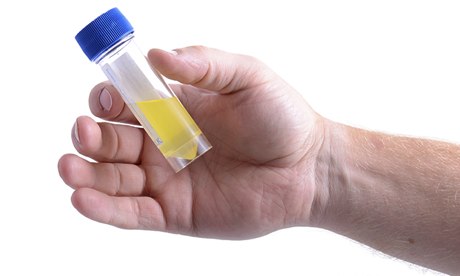
When you go for a pee, you probably don't pay attention to what it looks like. But if you haven't been tempted to check it before, a new colour chart from the Cleveland Clinic in America showing the spectrum of possible urine shades could convince you to do so. A pale straw colour is normal, while a brown-ale tinge may indicate dehydration or, more seriously, liver disease. By swatch-matching your urine colour to the Cleveland Clinic's diagram, you can see whether or not you are healthy.
The solution
The study of urine has been widely valued by doctors since ancient times. In 700AD it was established as a diagnostic tool by the monk and philosopher Theophilus.
He was such a fan that he wrote a treatise called De Urinis (On Urine) and systematically classified urine by colour and consistency. Old men, he said, had thin and white urine because they were melancholic. Nowadays, doctors are unlikely to eyeball your urine without sending it off to be analysed in a laboratory. Since the colour can be altered by medicines and food as well as more serious causes such as infections or cancers, what hues should worry you?
Pink to reddish urine can be due to beetroot (called beeturia), blackberries or rhubarb, but if you haven't eaten any you should see your doctor.
The list of other causes sounds alarming as it includes bladder infections and bladder, kidney or prostate cancer – but it is most likely to be none of these. Blood in the urine can be caused by heavy exercise, such as long-distance running – in medieval times, it was blamed on too much dancing or over-energetic sex (both of which could, theoretically, cause blood to get into the urine). Blood in the urine, however, may be more rusty brown than bright red or pink and may also be invisible to the naked eye.
Blue or green urine (truly alarming) can be caused by a range of drugs, including cimetidine, but also by rare medical conditions such as porphyria (and allegedly by Clorets breath mints). It can indicate infection with a bacteria called Pseudomonas. Foaming urine may be harmless but can also indicate too much protein due to kidney problems. Cloudy, white urine may be due to urine infections, harmless phosphate crystals, or possibly sexually transmitted infections. Very dark urine can indicate serious jaundice, and orange urine can be caused by vitamin supplements (for example, vitamin C), drugs and possibly carrots. So looking at your urine should be of interest. In earlier times, doctors also tasted it (sweet urine means diabetes), but you don't need to go that far.

